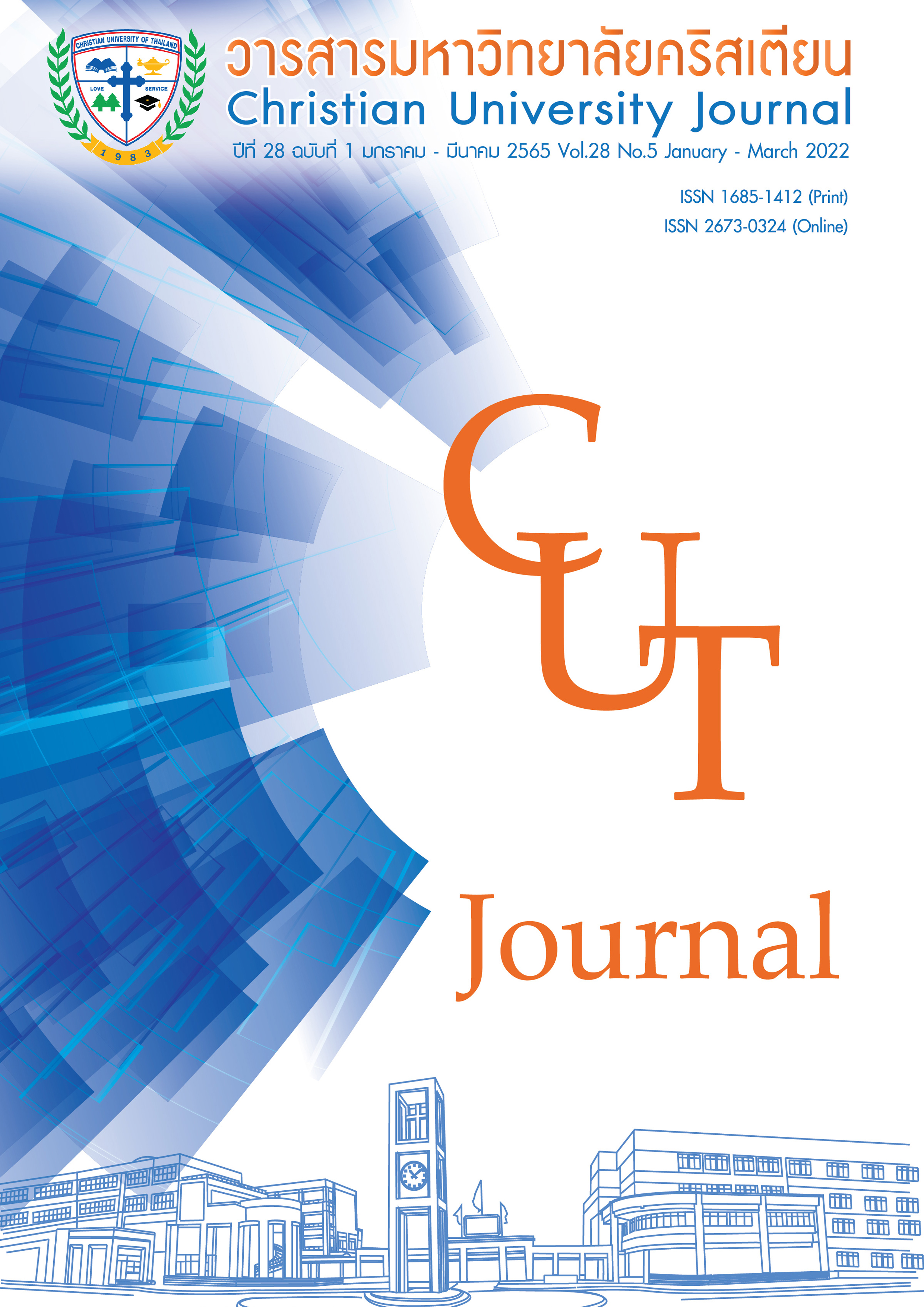The Effect of Plyometric Training with Jump Elastic Tire on Leg Muscle Power in Student of Thailand National Sports University Lampang Campus
Keywords:
Jump elastic tire, Plyometric, Leg muscle powerAbstract
The purpose of this research was to compare the effect of plyometric training program with jump elastic tire on leg muscle power in student of Thailand National Sports University Lampang Campus and to evaluate the satisfaction of users. This was experimental research. The sample group included 40 undergraduate students of the Thailand National Sports University Lampang Campus, who were registered badminton courses. They were selected by simple random sampling method and divided into two groups by matching group grouping method. The experimental group 1 was trained following a plyometric training program with jump elastic tire. The experimental group 2 was trained following a plyometric training program with Plyo Soft Box. The experimental groups were practiced for six weeks (three days a week). In order to affect to plyometric training with jump elastic tire to improve leg muscle power, a variety of methods including standing long jump, vertical jump and leg dynamometer were employed. The results were analyzed by using the statistical methods means of comparative analysis, standard deviation, and “T”value. Then, the results were analyzed by using statistical methods through (t-test Independent) at the statistical significance level of .05.
The findings found that use of Jump Elastic Tire showed a competent in improvement of leg muscle powers after the 6-week trial, and the data also indicated no statistically significant difference between our equipment and Plyo Soft Box (p<.05). Leg muscle Power of the experimental group 1 after 6-week were significantly increase from before training with a statistical significance at the level of .05. The students’ satisfaction were in the highest level in all aspect (x̄ = 4.68, S.D.=0.59.We expected the Plyometric Training with Jump Elastic Tire could be also of great usefulness in learning, exercise and training to improve the leg muscle power.
References
จำลอง โพธิ์บุญ และ วิสาขา ภู่จินดา. (2548). การจัดการยางรถยนต์ใช้แล้วเพื่อไม่ให้เป็นแหล่งเพาะพันธุ์ลูกน้ำยุงลาย ซึ่งเป็นสาเหตุของโรคไข้เลือดออก. วารสารการจัดการสิ่งแวดล้อม, 2(1), 18-46.
เจริญ กระบวนรัตน์. (2547). วิทยาศาสตร์การฝึกสอนกีฬา (Science of Coaching). กรุงเทพฯ: บริษัท สินธนาก๊อปปี้เซนเตอร์ จำกัด.
ชูศรี วงศ์รัตนะ. (2549). เทคนิคการเขียนเค้าโครงการวิจัย: แนวทางสู่ความสำเร็จ. กรุงเทพฯ: บริษัทไทเนรมิตกิจ อินเตอร์โปรเกรสซิฟจำกัด.
ซูฟียา เจะอารง. (2547). การเชื่อมโยงกับสภาวอารมณ์ของวัยรุ่นตอนปลายและผู้ใหญ่ตอนต้น (วิทยานิพนธ์ปริญญามหาบัณฑิต). จุฬาลงกรณ์มหาวิทยาลัย, กรุงเทพฯ.
ยุทธนา เรียนสร้อย. (2559). ผลของการฝึกพลัยโอเมตริกควบคู่การฝึกยืดเหยียดกล้ามเนื้อแบบกระตุ้นการรับรู้ของระบบประสาทกล้ามเนื้อที่มี่อพลังกล้ามเนื้อขา. วารสารวิทยาศาสตร์การกีฬาและสุขภาพ, 17(2), 42-55.
ยูโสบ ดำเต๊ะ. (2554). ผลของการฝึกพลัยโอเมตริกที่มีต่อความคล่องตัวในนักกีฬาฟุตบอล (วิทยานิพนธ์ปริญญามหาบัณฑิต). มหาวิทยาลัยทักษิณ, สงขลา.
ศิริชัย กาญจนวาสี, ทวีวัฒน์ ปิตยานนท์, และ ดิเรก ศรีสุโข. (2559). การเลือกใช้สถิติที่เหมาะสมสำหรับการวิจัย. กรุงเทพฯ: โรงพิมพ์แห่งจุฬาลงกรณ์มหาวิทยาลัย.
ศิรินภา มายอด และ สุพิชชา รุ่งโรจน์นิมิตชัย. (2563). การผลิตตัวดูดซับไออนปรอทและไอออนซัลไฟด์จากยางรถยนต์ใช้แล้ว. วารสารวิชาการพระจอมเกล้าพระนครเหนือ, 30(3), 416-431.
สำนักงานคณะกรรมการอุดมศึกษา และ วิทยาลัยวิทยาศาสตร์และเทคโนโลยีการกีฬา มหาวิทยาลัยมหิดล. (2558). เกณฑ์สมรรถภาพทางกายนักกีฬามหาวิทยาลัยแห่งประเทศไทย (รายงานผลการวิจัย). นครปฐม: มหาวิทยาลัยมหิดล.
อังคณา พันธ์หล่อ และ สมศักดิ์ เอื้ออัชฌาสัย (2560). การศึกษาคุณสมบัติเชิงกลของวัสดุแอลฟัสต์ผสมยางในรถจักรยานต์ที่ใช้แล้ว. วารสารวิศวกรรมศาสตร์ ราชมงคลธัญบุรี, 15(2),1-6.
อุดมศักดิ์ สาริบุตร. (2549). เทคโนโลยีผลิตภัณฑ์อุตสาหกรรม.กรุงเทพฯ : โอเอสพริ้นติ้งเฮ้าส์
Akkasarakul, P. (2012). Effects of aquatic plyometric training on leg muscular power and agility in male university basketball players. Journal of Sports Science and Health, 15(2), 13-23.
Cardinale, M., Newton, R., & Nosaka, K. (Eds.). (2011). Strength and conditioning: biological principles and practical applications. New Jersey: John Wiley & Sons.
Charoenphon, S. and Kritpet, T. (2011). Effects of Land and Aquatic Plyometric Training on Leg Muscular Explosive Power and 50 Metres Breaststroke Performance of Male Youth Swimmers. Journal of Sports Science and Health, 12(3), 39-51.
Escape Fitness. (2021). About the Plyosoft Box. Retrieved from https://escapefitness.com/ product-range/plyosoft
Fisher, J., & Corcoran, K. J. (2007). Measures for clinical practice: A sourcebook. Oxford: Oxford University Press.
Ghitescu, I. G., Tudor, V., & Moanta, A. D. (2014). Study on the development of vertical jumping force in U18 junior basketball players. Procedia-Social and Behavioral Sciences, 117, 55-59.
Greg, P. (2009). Double-versus single-incision technique for open carpal tunnel release. Orthopedics (Online), 32(10), 733.
Greg, P. (2009). Double-versus single-incision technique for open carpal tunnel release. Orthopedics (Online), 32(10), 733.
Juntiya, V.,Muongmee ,P., and Tongkhambanchong, S.(2020). The Effects of Incline Surface, Flat Surface and Combined Plyometric Training on Anaerobic Parameters, Acceleration and Jumping Ability. Journal of Health, Physical Education and Recreation, 46(2), 235-250.
Krejcie and Morgan,1970 Krejcie, R. V., & Morgan, D. W. (1970). Determining sample size for research activities. Educational and psychological measurement, 30(3), 607-610.
Laia, F M., and Bangsbo, J.(2010). Speed endurance training is a powerful stimulus for physiological adaptation and performance improvements of athletes. Journal of Medicine and Science in Sports, 20(2), 11-23.
Matavulj, D., Kukolj, M., Ugarkovic, D., Tihanyi, J., & Jaric, S. (2001). Effects of pylometric training on jumping performance in junior basketball players. Journal of sports medicine and physical fitness, 41(2), 159-164.
Newton, R. U., and Kraemer, W. J. (1994). Developing Explosive Muscular Power: Implications for a Mixed Methods Training Strategy. Strength & Conditioning Journal, 16(5), 20-31.
Sandler, D. (2005). Sports power. Illinois: Human Kinetics.
Srimak, T. and Netprasert, S.(2015). Comparison of Skipping Program and Rise and Fall Bench Program for Leg Muscles Efficiency of Primary School Students 4-6 of Watluangrachawat Municipality School, Satit Ramkhamhaeng, Muang Uthai Thani. Journal of Graduate Studies in Northern Rajabhat Universities, 5(8), 95-106.
Stojanovic, M. D., Ostojic, S. M., Calleja-González, J., Milosevic, Z., & Mikic, M. (2012). Correlation between explosive strength, aerobic power and repeated sprint ability in elite basketball players. Journal of Sports Medicine and Physical Fitness, 52(4), 375.
Thomas, R. B., and Roger, W. E. (2008). Essentials of Strength Training and Conditioning. (3rd ed). Illinois: Human Kinetics.
Wilson, G. J., Murphy, A. J., and Giorgi, A. (1996). Weight and plyometric training: effects on eccentric and concentric force production. Canadian Journal of Applied Physiology, 21(4), 301-315.
Downloads
Published
Issue
Section
License
Copyright (c) 2022 Christian University of Thailand

This work is licensed under a Creative Commons Attribution-NonCommercial-NoDerivatives 4.0 International License.


